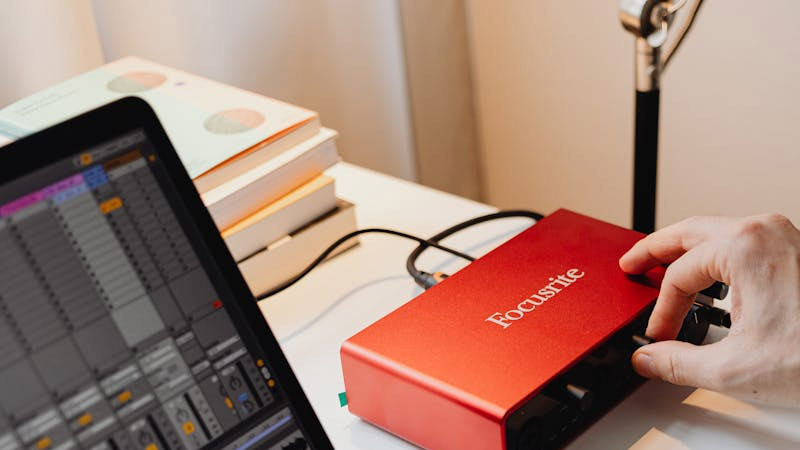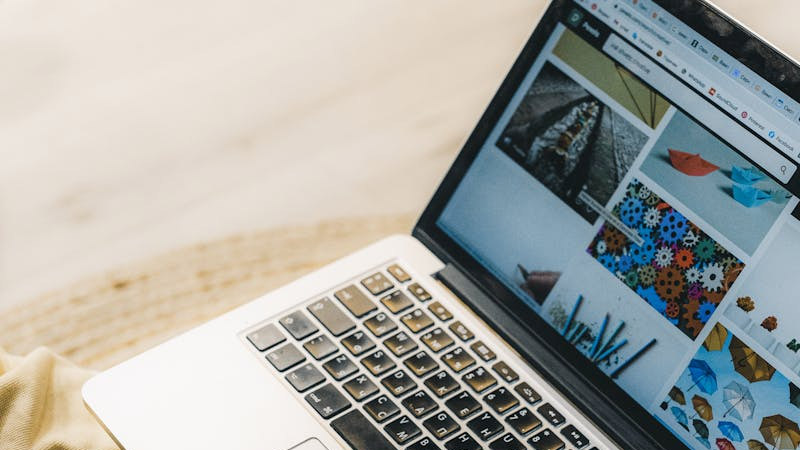- 首頁
- Blog
- How to Elevate Web Design from Mediocrity? Master the Three Fundamental Elements: "Form," "Color," and "Texture"
How to Elevate Web Design from Mediocrity? Master the Three Fundamental Elements: "Form," "Color," and "Texture"
2020 / 11 / 13
Have you ever experienced this dilemma: at first glance, your website looks pretty good, but after a few more looks, there’s an indescribable sense that something feels off?
Actually, the "culprit" behind this often lies in those easily overlooked details of web design. As the saying goes, "Details determine success or failure." In the world of web design, even a small flaw can impact the final outcome of the entire design.
So, how can you make your web design stand out from the ordinary and become more refined and captivating? According to HKWEB, all art should possess aesthetic appeal, and the fundamental components of "beauty" are "form," "color," and "texture." The same principle applies to web design.
Next, we’ll delve into these three foundational elements of web design—"form," "color," and "texture"—to help you create eye-catching work.
Form: The Foundation of Shaping Unique Character
"Form" is one of the most critical factors in web design and a key determinant of a design’s quality. It encompasses various aspects such as the outline, lines, and shape of graphics.
In the journey of design, mastering "form" requires repeated reflection and careful deliberation. However, mere accuracy is not enough; what’s more important is imbuing "form" with a unique personality and beauty. Imagine drawing a rounded rectangle: most people might simply add rounded corners to a standard rectangle. While this approach is neat, it tends to look too generic and lacks distinctiveness, making it hard to stand out among countless other designs.
But if we shift our perspective and apply unique treatments to this rectangle—or use an alternative, unconventional drawing technique to give it a sense of expansion or a fuller appearance—this rounded rectangle can instantly become distinctive and more visually engaging. This innovative shaping of "form" not only captures users’ attention but also helps them remember your work amidst a sea of similar designs.
Color: The Magic of Creating Visual Atmosphere
Color is another magical key in web design. It can instantly unlock users’ emotions and create a unique visual atmosphere. HKWEB believes there are no inherently "ugly" colors in the world; what we often perceive as "ugly" color combinations usually result from poor handling of the relationships between colors.
Although there are many online tools available for color matching, truly mastering color and creating stunning combinations ultimately depends on the designer’s precise sense of "color perception." This ability isn’t developed overnight but is cultivated through continuous training and rich practical experience.
Take, for example, the most challenging color combination: "red and green." Outside of specific holiday scenarios like Christmas, we rarely see this pairing in everyday designs. However, if we skillfully adjust the area, brightness, saturation, or even apply gradient effects to these two colors to create a natural and smooth transition, "red and green" can also exhibit a sophisticated and fashionable beauty.
Texture: The Finishing Touch That Enhances Design Appeal
"Texture" refers to the overall quality and feel of a web design. It can create unique abstract sensations in the virtual world while also replicating real-world details, offering users a more authentic and immersive experience.
A design with good texture is like a exquisite piece of art—it leaves a lasting impression. For instance, some outstanding logo designs not only recreate the realistic form of an object but also enrich the design’s depth through meticulous detailing. Such logos not only deepen users’ memory of the brand but also make them pause unconsciously to admire and immerse themselves in the beauty of the design.
So, how can we add texture to a design? Generally, there are two common methods: adding patterns (materials) and incorporating light-shadow effects. Adding patterns can make a design look more realistic and layered, as if it can be touched. Adding light-shadow effects, on the other hand, can create a sense of three-dimensionality and space, making the design more vivid and lifelike.
However, it’s important to note that "adding texture" doesn’t mean blindly pursuing decorative effects. Overloading a design with patterns and light-shadow effects can make it appear cluttered and cumbersome, stripping away its original simplicity and beauty. Therefore, during the design process, we must apply these methods appropriately based on the design’s theme and style, adding just the right amount of texture to perfect the overall web design.
HKWEB offers one-stop digital business solutions, including web design, online promotion, web management and hosting, system development, and other value-added services to fully meet clients’ business needs. Feel free to contact us anytime—HKWEB is your best partner for expanding online business opportunities.
TEL: 852-3749 9734
Email : info@hkweb.com.hk
Website: https://hkweb.com.hk
Actually, the "culprit" behind this often lies in those easily overlooked details of web design. As the saying goes, "Details determine success or failure." In the world of web design, even a small flaw can impact the final outcome of the entire design.
So, how can you make your web design stand out from the ordinary and become more refined and captivating? According to HKWEB, all art should possess aesthetic appeal, and the fundamental components of "beauty" are "form," "color," and "texture." The same principle applies to web design.
Next, we’ll delve into these three foundational elements of web design—"form," "color," and "texture"—to help you create eye-catching work.
Form: The Foundation of Shaping Unique Character
"Form" is one of the most critical factors in web design and a key determinant of a design’s quality. It encompasses various aspects such as the outline, lines, and shape of graphics.
In the journey of design, mastering "form" requires repeated reflection and careful deliberation. However, mere accuracy is not enough; what’s more important is imbuing "form" with a unique personality and beauty. Imagine drawing a rounded rectangle: most people might simply add rounded corners to a standard rectangle. While this approach is neat, it tends to look too generic and lacks distinctiveness, making it hard to stand out among countless other designs.
But if we shift our perspective and apply unique treatments to this rectangle—or use an alternative, unconventional drawing technique to give it a sense of expansion or a fuller appearance—this rounded rectangle can instantly become distinctive and more visually engaging. This innovative shaping of "form" not only captures users’ attention but also helps them remember your work amidst a sea of similar designs.
Color: The Magic of Creating Visual Atmosphere
Color is another magical key in web design. It can instantly unlock users’ emotions and create a unique visual atmosphere. HKWEB believes there are no inherently "ugly" colors in the world; what we often perceive as "ugly" color combinations usually result from poor handling of the relationships between colors.
Although there are many online tools available for color matching, truly mastering color and creating stunning combinations ultimately depends on the designer’s precise sense of "color perception." This ability isn’t developed overnight but is cultivated through continuous training and rich practical experience.
Take, for example, the most challenging color combination: "red and green." Outside of specific holiday scenarios like Christmas, we rarely see this pairing in everyday designs. However, if we skillfully adjust the area, brightness, saturation, or even apply gradient effects to these two colors to create a natural and smooth transition, "red and green" can also exhibit a sophisticated and fashionable beauty.
Texture: The Finishing Touch That Enhances Design Appeal
"Texture" refers to the overall quality and feel of a web design. It can create unique abstract sensations in the virtual world while also replicating real-world details, offering users a more authentic and immersive experience.
A design with good texture is like a exquisite piece of art—it leaves a lasting impression. For instance, some outstanding logo designs not only recreate the realistic form of an object but also enrich the design’s depth through meticulous detailing. Such logos not only deepen users’ memory of the brand but also make them pause unconsciously to admire and immerse themselves in the beauty of the design.
So, how can we add texture to a design? Generally, there are two common methods: adding patterns (materials) and incorporating light-shadow effects. Adding patterns can make a design look more realistic and layered, as if it can be touched. Adding light-shadow effects, on the other hand, can create a sense of three-dimensionality and space, making the design more vivid and lifelike.
However, it’s important to note that "adding texture" doesn’t mean blindly pursuing decorative effects. Overloading a design with patterns and light-shadow effects can make it appear cluttered and cumbersome, stripping away its original simplicity and beauty. Therefore, during the design process, we must apply these methods appropriately based on the design’s theme and style, adding just the right amount of texture to perfect the overall web design.
HKWEB offers one-stop digital business solutions, including web design, online promotion, web management and hosting, system development, and other value-added services to fully meet clients’ business needs. Feel free to contact us anytime—HKWEB is your best partner for expanding online business opportunities.
TEL: 852-3749 9734
Email : info@hkweb.com.hk
Website: https://hkweb.com.hk
MORE BLOG
-
Do Individual Studios Need a Website? Sharing Five Key Areas of Web Development and Online Promotion Focus
2025/12/03 This requires entrepreneurs to consider creating a professional website and developing an effective online promotion strategy to ensure their individual studio stands out in a competitive market. -
Web Development + Digital Marketing: Crafting Thanksgiving & Black Friday Campaigns That Drive Record Profits for Businesses
2025/11/21 As your professional partner in web development and digital marketing, Arachne Group Limited understands that a successful holiday campaign is far more than just offering "discounts." -
What Are Web Development and Web Design? The Two Pillars of Building Successful Web Solutions
2025/11/19 Transforming it into a functional, live website requires a series of complex conversion processes, including writing code, setting up databases, and building backend functionalities.
















